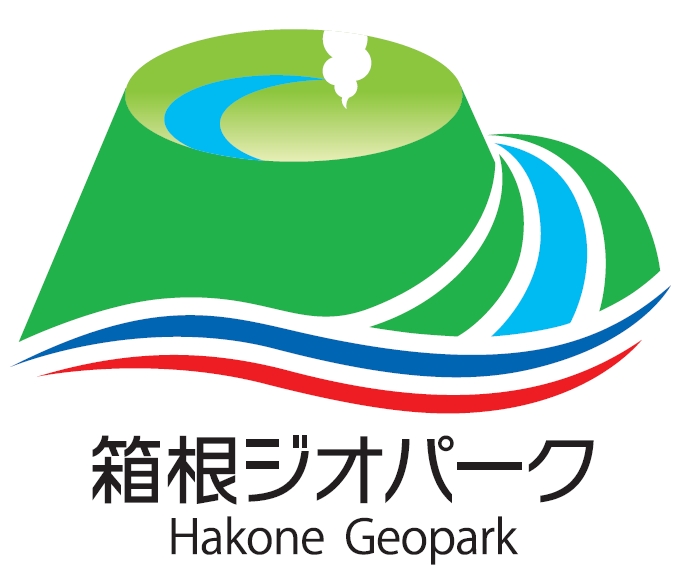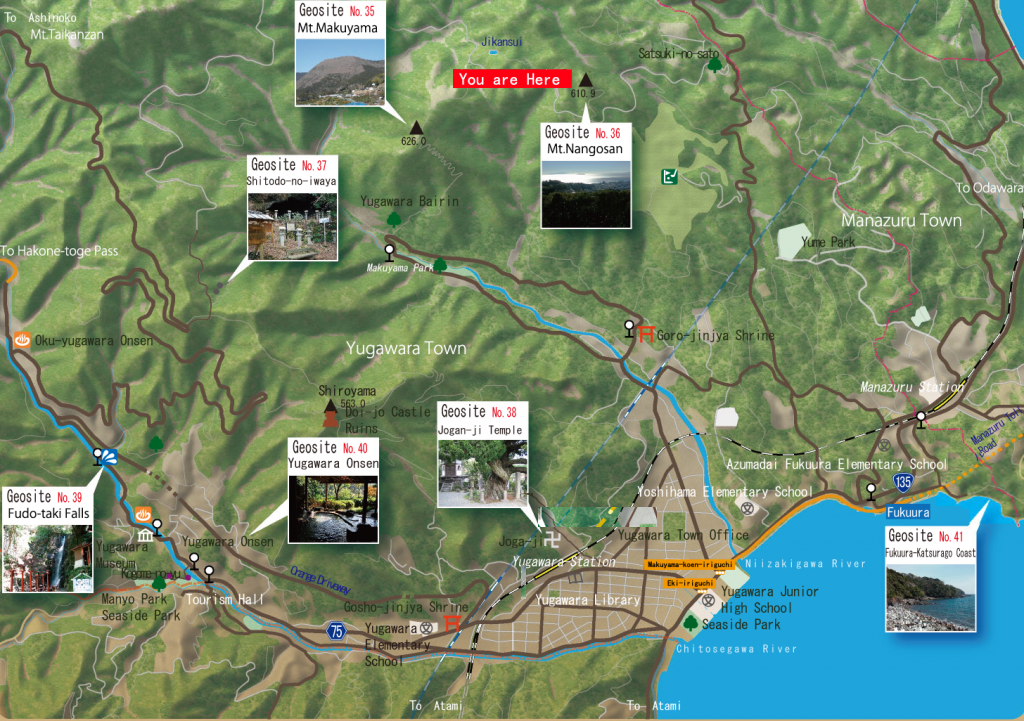Mt.Nango
Mt.Nango is located in the northern part of Yugawara and has an altitude of 611m, which is ideal for hiking. From the summit of the mountain, the Izu Islands including Hatsushima, Manazuru Peninsula, and the luscious blue sea reflecting light overlooking the beautiful Sagami Bay can be viewed.
A tangerine orchard spreads across the middle of the mountainside and bears brightly colored fruits from early October to late December.
From the end of May to the beginning of June, an event is held at Satsuki no Sato Hoshigayama Park, and enjoying the scenery that looks like a pink carpet from the top of Mt. Nango is very popular.
There is also the Nangoyama hiking course that includes Satsuki no Sato, where 50,000 Satsuki plants are in full bloom, and large numbers of tourists visit in early summer.
 Image 1. Panorama view from the summit of Mt. Nango
Image 1. Panorama view from the summit of Mt. Nango
Origin and Geology
After the outer rim of Hakone Volcano was formed, a large eruption occurred in the central part of the volcano, creating a caldera (approximately 230,000 to 130,000 years ago). At the same time, volcanic activity at the foot of the outer rim occurred from the northwest to southeast, and lava flowed out of many craters. Mt. Nango is believed to have been formed about 150,000 years ago as a result of volcanic activity at that time. The neighboring Makuyama and Manazuru Peninsula were also formed at about the same time.
The lava that makes up Mt. Nango is a dacite of the Honkomatsu Lava Group.
Self-Identification Water
In Yugawara, which has a connection to Minamoto no Yoritomo, various Yoritomo legends persist. One of them is the Self-Identification Water, which is about a 15-minute walk northwest of the summit of Mt. Nango.
Legend has it that Yoritomo, defeated in the battle of Ishibashiyama, ran away into the mountains and arrived at this pond, and when he saw his gaunt face reflected in the pond, he decided to commit suicide, however, Doi Sanehira, a powerful family in Yugawara, somehow dissuaded him and discouraged him from doing so.
It is a suitable place to take a walk while feeling the history.
Image 3. Self-Identification Water
Image 4. Geosite Map



